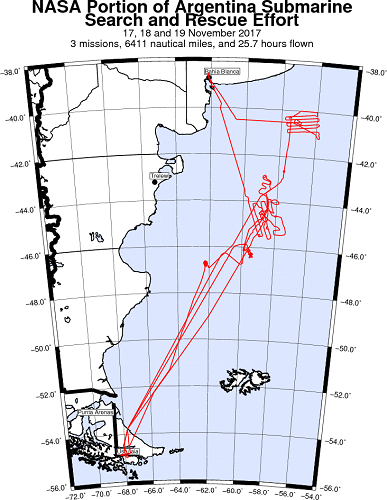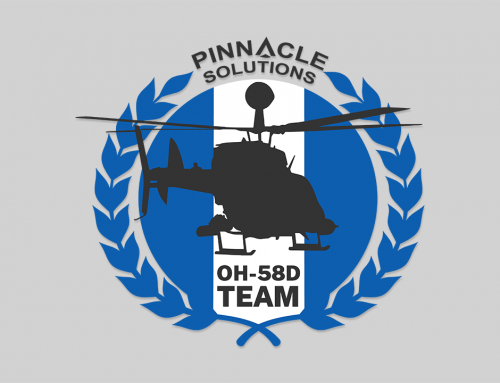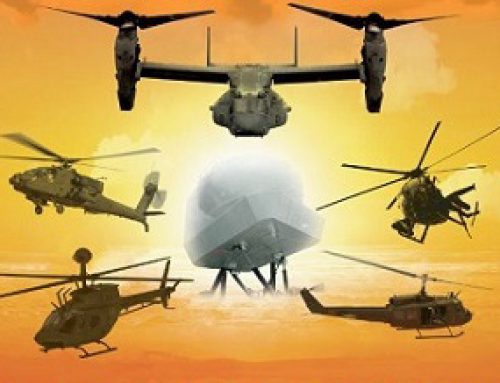On November 17th, 2017 William “Trey” Carter, the P-3 Orion Aircraft Commander, received a call from the US Embassy in Argentina inquiring about his crew’s ability to perform Search and Rescue (SAR) operations. An Argentine submarine, the ARA San Juan, had gone missing and Trey’s team would prove critical to the initial search effort.
Trey Carter and his crew work for Pinnacle Solutions providing aircraft support and services to the National Aeronautics and Space Administration (NASA) under the Aircraft Maintenance and Operations Contract (AMOC). At the time of the call, the team had already been deployed to Ushuaia, Argentina for several weeks supporting Operation IceBridge Antarctica, the largest airborne survey of Earth’s polar ice ever flown. Though Trey and his team had a dedicated mission, they quickly demonstrated their flexibility and adaptability by supporting this SAR mission on short notice with NASA’s approval.
Subsequent to receiving the call, the crew developed a search plan and communications plan and sent them to the Argentine SAR Center for review and approval. It was truly a team effort as NASA’s science team volunteered to act as visual observers. “The decision to launch was made at approximately 10:30 a.m. Within 30-minutes, the Pinnacle crewmembers John Doyle, Kurt Williams, Bill Ziegelbauer, Todd Brophy, and Brad Soeder were out the door and had the aircraft powered up and ready for flight” says Trey Carter. The aircraft launched shortly after noon with 14 people on board – the Pinnacle flight crew; Eugenia De Marco, NASA’s Deputy Program Manager, one Argentine Naval Officer and enough members of the science team to operate the aircraft’s mission equipment: the radar, DMS camera, IR camera, and Magnetometer.
For three days, NASA’s P-3 aircraft, the first international SAR support on the scene, flew extended SAR missions. On the third day, a US Navy P-8 patrol aircraft arrived in Argentina to take over operations. The NASA P-3 aircraft returned to Ushuaia to resume its geological survey mission the following day.
“Given the short notice of the mission, the language barrier, the lack of a fully trained SAR crew, and the limited sensor capabilities of the aircraft, it was as successful a team effort as it could have possibly been.” says Trey Carter. As a testament to the team’s professionalism, adaptability, and versatility, Mr. Tom Cooney, Chargé d’Affaires, U.S. Embassy, Argentina sent a letter to NASA’s Acting Administrator, Mr. Robert M. Lightfoot, stating: “NASA’s flights over the search area were essential in the initial stages of the search effort and helped narrow down and focus the subsequent phases of the search and rescue response. The ability of NASA to conduct these flights was critical while the U.S. Department of Defense mobilized its considerable resources to arrive to Argentina, which eventually allowed the P3 to return to its original mission in Ushuaia.”
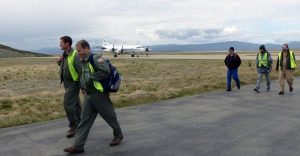
Image 2 – In the photo: Jay Stapleton (Pilot), rey Carter (Pilot), Pat Didier (NOAA Pilot in blue flight suit), and Rob Russell (ATM Engineer on the right) and P-3 Orion NASA aircraft.
Photo credit: @NASA_ICE (11/11/2017)
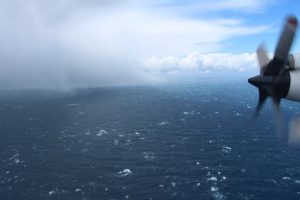
View out the window of P-3 aircraft showing the high sea state and rain/snow squalls.
Photo credit: John Sonntag (NASA)
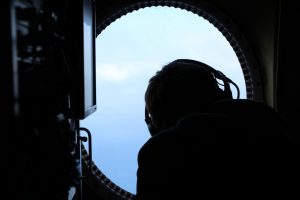
Nathan Kurtz (NASA) looking out of P-3 aircraft during the search.
Photo credit: John Sonntag (NASA)

